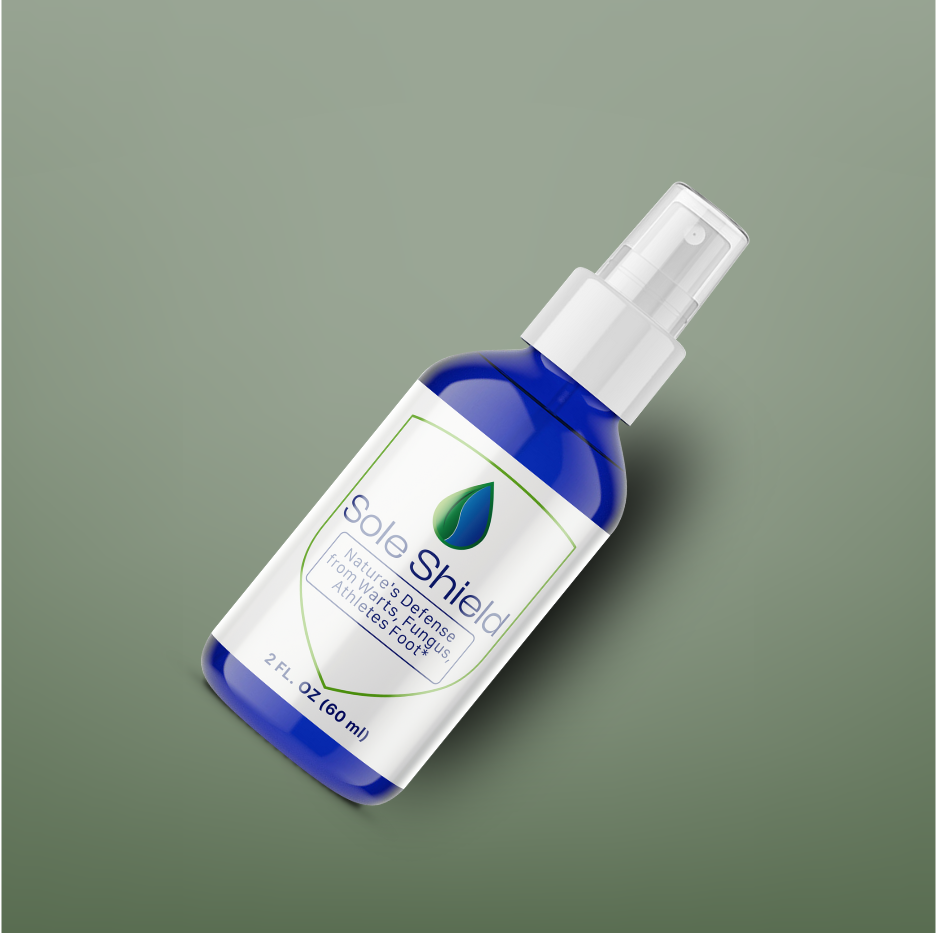Fibrocystic breast disease (FBD) is a common problem among many women, especially those of child-bearing age. This is associated with non-malignant lumps, breast cysts, pain in the breast region, and tenderness. FBD is not known to be fatal, however, it can cause a lot of pain and worry.
Instead, recent studies show that the symptoms of FBD may be relieved by treating the root of the FBD causes with an iodine replacement therapy.
Understanding Fibrocystic Breast Disease

Fibrocystic breast disease (FBD) is a common condition affecting women, particularly those between the ages of 30 to 50. It is characterized by the development of cysts in the breast tissue, which can cause a range of symptoms from mildly annoying to extremely painful.
FBD is not a cancerous disease, but it may obfuscate breast self-examination and further increase the chances of developing breast cancer. The etiology of FBD is still uncertain although hormonal factors such as estrogen dominance are considered largely contributory.
Women with FBD quite often have to deal with breast pain, unusual bumps in the breast or even some discharge from the nipples, rest and medical advice are regular basics in their life.
The Role of Iodine in Breast Health and Fibrocystic Breast Disease

Most individuals are quite aware that iodine belongs to a class of elements which is of a particular special importance to an organ of the body, which is the thyroid. This factor is useful in other tissues as well. Iodine is also deemed to be significant for the well-being of the breast tissues.
Certain studies have shown that iodine deficiency has been connected with several disorders of the breast including fibrocystic disease. The working hypothesis now is that indeed, such levels of iodine are necessary for the restoration of normal breast tissues, and these levels are most likely attainable via supplementation of iodine.
In the last few decades studies have been conducted aimed at assessing the outcome of iodine replacement therapy particularly in this case of treatment to women with fibrocystic breast disease. As supportive of these therapies, these studies give more concretely the molecular form of iodate is useful to overcome the FBD and promote the recovery of breast health.
The Role of Iodine Deficiency
Lack of iodine has been associated with a higher occurrence of fibrocystic breast disease. It is interesting to note that iodine has an invaluable role in the hormonal synthesis process thyroid since this hormone modulates the growth and maturation of the mammary gland.
In the absence of Iodine supplementation, it can cause a disturbance in the levels of thyroid hormones which leads to irritating lumpy and cystic breast tissues. Some of such effects include the development of fibrocystic breast diseases FBD, which is brought about by the inefficient functioning of the thyroid gland.
Some women with FBD may find that using iodine helps diminish those symptoms, particularly if they don’t get enough iodine. Thus, normal iodine content is safe for thyroid hormone balance that prevents or reduces cystic changes in breast tissue.
Clinical Features and Diagnosis
Women with fibrocystic breast disease will experience different clinical symptoms; however, the most common signs include breast pain, lumpiness, and cyst formation. The level of the symptoms varies and usually tends to be aggravated prior to the onset of a menstrual cycle due to hormonal changes.
No signs and/or symptoms are reported by some women making such ladies follow up very essential. The diagnosis in most cases is made based on the physical exam, mammogram, and ultrasound. Such imaging does help in distinguishing the benign cyst from the malignant breast pathology.
In some situations, a segmental resection of the breast or a biopsy may be done to exclude the possibility of breast cancer just in case there are some lumps suspected.
Clinical Evidence Supporting Iodine Supplementation Therapy

According to Ghent et al. (1993), three clinical studies suggesting the potential advantages of iodine therapy for women suffering from FBD were presented. These studies indicated that iodine therapy could lead to significant improvements in symptoms. Additionally, some patients experienced complete or partial remission, highlighting the potential effectiveness and variability in individual responses to iodine treatment.
First Study: Sodium Iodide V. Protein Bound Iodide
In this study which comprised 233 subjects receiving sodium iodide and 588 subjects treated with protein bound iodide, it was noted that 70% of sodium iodide treated subjects reported clinical improvement. However, sodium iodide was related to a high incidence of adverse effects.
In proportion, it was only 40% for those treated with protein iodide but still less adverse effects in comparison than those using sodium iodide. This highlights the potential for iodine toxicity, particularly with sodium iodide, underscoring the importance of monitoring iodine intake to avoid adverse effects.
Second Study: Molecular Iodine as a treatment
This research was concentrated on oral iodine, particularly in patients who had experienced symptoms for unexplained periods even after previous treatments. Out of 145 patients switching to molecular iodine, 74% in the crossover group achieved clinical improvement. 72% likewise improved, among those beginning treatment with molecular iodine.
Third Study: Double-Blind, Placebo-Controlled Trial
In this most stringent study, 65% of women who underwent treatment reported subjective and objective improvement.
Similarly, the placebo group corrected expectations showed a 33% subjective placebo effect with only 3% objective improvement. This study reinforced the effective treatment. The iodine loading test was used to assess iodine sufficiency, highlighting its importance in evaluating thyroid function and potential links to health issues such as breast disease and cancer risk.
Why Molecular Iodine?

According to the studies conducted by Ghent et al, iodine in the molecular form has been the most effective type of iodine for the patients suffering from fibrocystic breast disease.
Unlike sodium iodide or protein-bound iodide, molecular iodine is not thyrotropic, i.e. does not stimulate thyroid glands. This is particularly useful in the case of breast tissue since iodine for the breast can be delivered without an effect on the thyroid.
The research proposes that molecular iodine is not only more efficient, but also safer than any other types of iodine. This is especially important for patients with autoimmune thyroid disease, as it minimizes the risk of promoting thyroid dysfunction.
Nutritional Supplements and Lifestyle Recommendations
The very painful fibrocystic disease of the breast, which is regarded as breast swelling, may be alleviated by a number of dietary supplements as well as lifestyle alteration measures.
- Iodine supplementation: Since it is a component needed for the creation of thyroid hormones, the addition of iodine may assist in minimizing the manifestations of FBD by stimulating adequate breast tissue development.
- Omega-3 fatty acids: Due to their anti-inflammatory action, omega 3 fatty acids may also help in alleviating tenderness and inflammation in sore breasts’.
- Vitamin E: Inflammation in the breast can be pacified by the use of vitamin E which is an antioxidant and enhances healing.
- Probiotics: Probiotics are active now and will keep the normal flora of the gut which is important in how the hormones and the immune system of the body works.
- Dietary changes: Increased fruit, vegetables, and whole grains in the diet gradually leads to a decline of symptoms of FBD. Cutting back on caffeine, saturated fat and salt may be also worth trying.
Use of such supplements together with these dietary changes would improve breast health and help lessen the symptoms of FBD as well.
Breast Cancer Risk and Prevention

Women who have suffered from fibrocystic breast disease also have chances of developing breast cancer. Several measures can be taken to lessen this risk:
- Regular breast self-examination: Recognizing self breasts at home is important since it may help identify some self breast changes rushing to the clinician some of which include lumps or cysts.
- Mammography: Annual screening with mammography should remain accessible to women above 40 years for women to screen against any possible chronic disease especially breast cancer.
- Breast ultrasound: Breast ultrasound examination may also be career essential because of the positive mammogram which is a clinical procedure that uses x rays for the enable assessment of suboptimal tissue.
- Iodine supplementation: It helps to prevent or lower the risk of developing breast cancer through preserving the function of the thyroid gland and hence aiding in the T3 and T4 hormone levels.
- Dietary changes: Consuming a lot of fruits, vegetables, and whole grains are known to reduce risks for breast cancer. Other studies, on the other hand, suggest genders like caffeine, saturated fats, and salt should be omitted.
Women who suffer from FBD are therefore able to act knowing that the risk of developing cancer in their breast has been lowered through stiff measures.
Implications for Breast Cancer Treatment and Future Research
From a review of the literature, it may be concluded that molecular iodine replacement therapy can be considered as one of the viable new treatment strategies for fibrocystic breast disease.
Given the understanding of the incidence of this disorder and the existing narrow band of effective therapeutic measures, preventive iodine therapy is favorable for a vast majority of the women.
At some point, even the iodine-induced effect on the thyroid gland and nodules must be taken into account as they may also present risks in their excessive form but may moderate nodule enlargement in their adequate doses.
It is also recognized that there will be a need for more work into the different ways that iodine interacts with the breast tissue and for the development of standardized protocols. Such studies, particularly multicenter ones, would also prove the importance of these findings and promote the practice of administering iodine therapy in the clinical setting.
Conclusion
The use of iodine replacement therapy, particularly molecular iodine for treating fibrocystic breast disease, appears to be very beneficial. The clinical studies reviewed showed that in the majority of patients, the symptoms improved quite dramatically and there were less adverse effects than with other iodine preparations.
Looking ahead, as more studies develop, iodine therapy is likely sooner rather than later to be adopted as a standard therapy for managing fibrocystic disease and would certainly be a great comfort to many women in the world. Additionally, understanding the relationship between iodine deficiency and thyroid cancer could further highlight the importance of iodine therapy in preventing thyroid-related malignancies.
References
Ghent, W. R., Eskin, B. A., Low, D. A., & Hill, L. P. (1993). Iodine replacement in fibrocystic disease of the breast. Canadian Journal of Surgery, 36(5), 453-460. PMID: 8221402.




